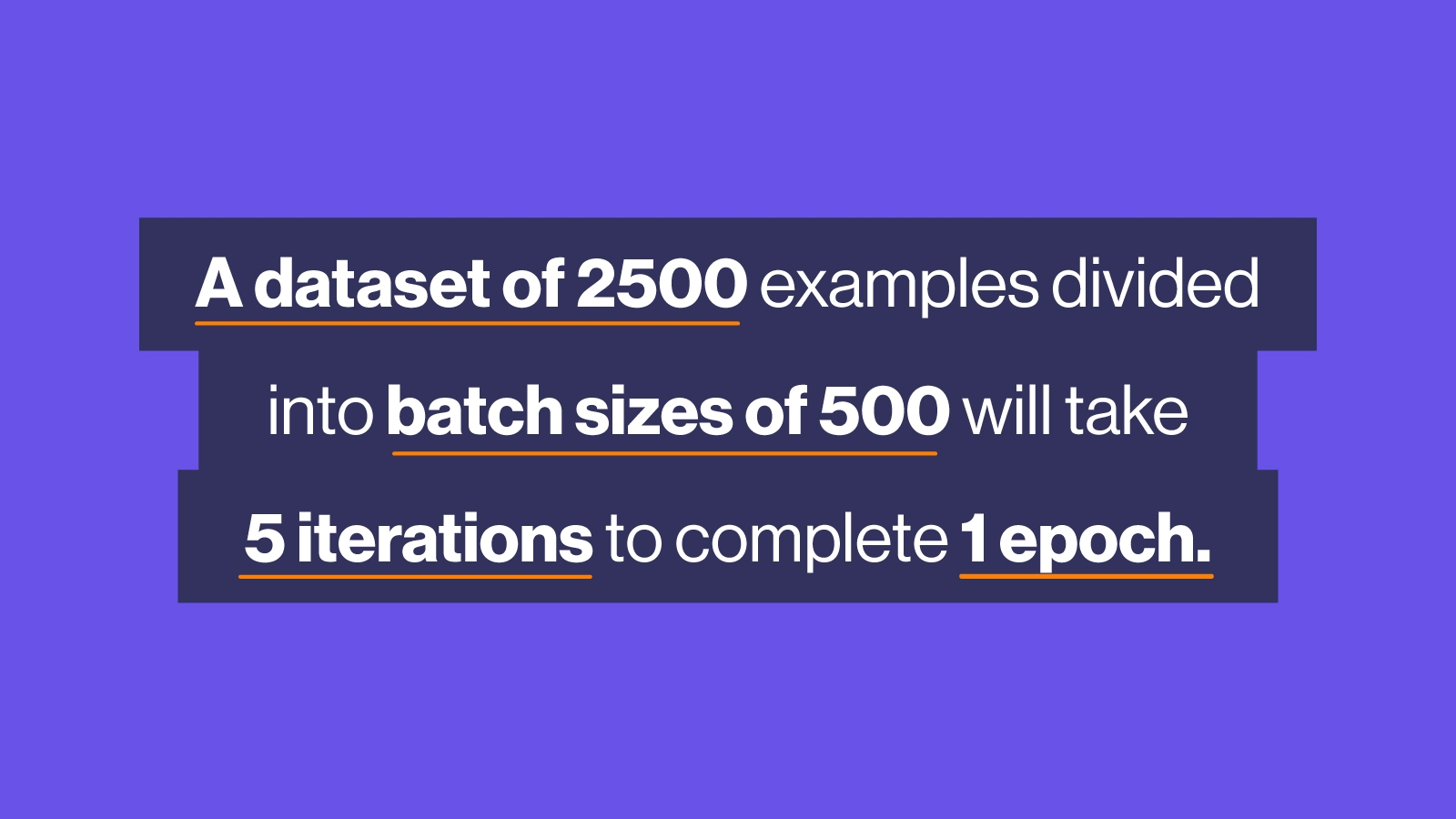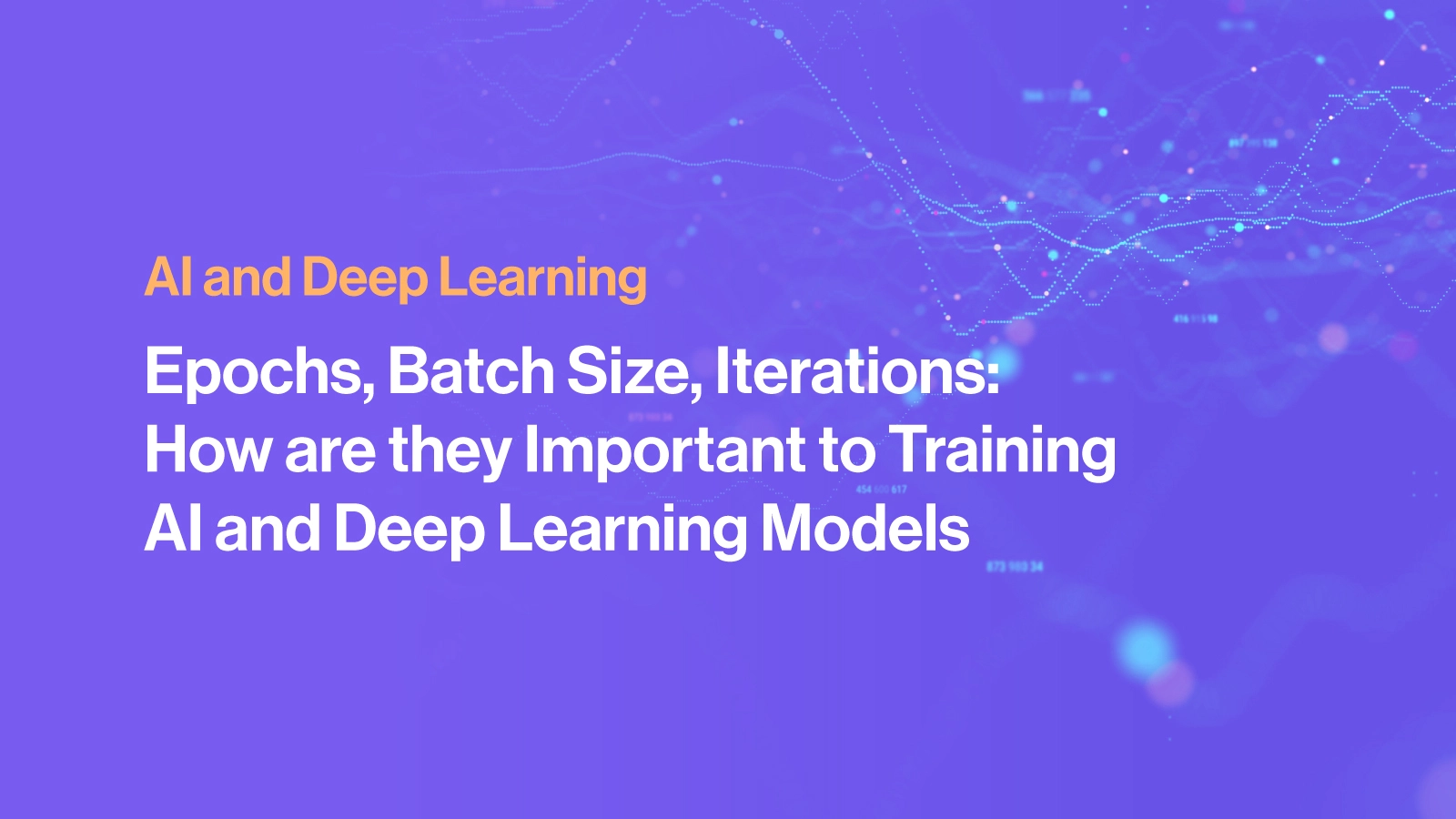Introduction to Deep Learning and AI Training
Deep learning and AI training are crucial components of modern technology. Deep learning and AI training aim to develop models that can learn from and make predictions on large amounts of data. These models can be used for various applications, including image and speech recognition, natural language processing, and even self-driving cars.
In this article, we will explore the importance of epoch, batch size, and iterations in deep learning and AI training. These parameters are crucial in the training process and can greatly impact the performance of your model.
What are Epochs?
An epoch is a single pass through the entire training dataset. It is used to measure the number of times the model has seen the entire dataset. Since epochs can get quite large, it is often divided into several smaller batches.
An epoch is a full training cycle through all of the samples in the training dataset. The number of epochs determines how many times the model will see the entire training data before completing training.
The number of epochs is an important hyperparameter to set correctly, as it can affect both the accuracy and computational efficiency of the training process. If the number of epochs is too small, the model may not learn the underlying patterns in the data, resulting in underfitting. On the other hand, if the number of epochs is too large, the model may overfit the training data, leading to poor generalization performance on new, unseen data.
The ideal number of epochs for a given training process can be determined through experimentation and monitoring the performance of the model on a validation set. Once the model stops improving on the validation set, it is a good indication that the number of epochs has been reached.
What is Batch Size?
Batch size is one of the most important hyperparameters in deep learning training, and it represents the number of samples used in one forward and backward pass through the network and has a direct impact on the accuracy and computational efficiency of the training process. The batch size can be understood as a trade-off between accuracy and speed. Large batch sizes can lead to faster training times but may result in lower accuracy and overfitting, while smaller batch sizes can provide better accuracy, but can be computationally expensive and time-consuming.
The batch size can also affect the convergence of the model, meaning that it can influence the optimization process and the speed at which the model learns. Small batch sizes can be more susceptible to random fluctuations in the training data, while larger batch sizes are more resistant to these fluctuations but may converge more slowly.
It is important to note that there is no one-size-fits-all answer when it comes to choosing a batch size, as the ideal size will depend on several factors, including the size of the training dataset, the complexity of the model, and the computational resources available.
What are Iterations?
Iterations are the number of batches required to complete one epoch used to measure the progress of the training process. The iteration count is equal to the number of batches in an epoch, and it is calculated by dividing the total number of samples in the training dataset by the batch size. Since the batch size and iterations are dependent on each other, it is smart to decide on these two parameters simultaneously to optimize your model.
Iterations play a crucial role in the training process, as they determine the number of updates made to the model weights during each epoch. Like batch size, more iterations can increase accuracy but too much can lead to overfitting; fewer iterations can reduce the time taken to train but can lead to an overgeneralization of the data causing underfitting. The number of iterations can have an impact on the accuracy and computational efficiency of the training process, and it is another important hyperparameter to tune when training deep learning models.

Importance of Epoch, Batch Size, Iterations in Deep Learning and AI Training
The optimal values for epoch, batch size, and iterations can greatly impact the performance of your model.
Too few epochs can result in underfitting, where the model is unable to capture the patterns in the data. On the other hand, too many epochs can result in overfitting, where the model becomes too specific to the training data and is unable to generalize to new data.
Batch size is important because it affects both the training time and the generalization of the model. A smaller batch size allows the model to learn from each example but takes longer to train. A larger batch size trains faster but may result in the model not capturing the nuances in the data.
Iterations are important because they allow you to measure the progress of the training process. If the iterations are set too high, the model may never converge and training will never be completed. If the iterations are set too low, the model may converge too quickly and result in suboptimal performance.
How to determine the optimal values for Epoch, Batch Size, Iterations
The optimal values for each parameter will depend on the size of your dataset and the complexity of your model. Determining the optimal values for epoch, batch size, and iterations can be a trial-and-error process.
One common approach is to start with a small number of epochs and a small batch size. Then, gradually increase the number of epochs and batch size until you find the best balance between training time and performance. Another approach is to use a technique called early stopping, where you stop training the model once the validation loss stops improving.
It is important to remember that the optimal values for each parameter will depend on the size of your dataset and the complexity of your model. Just make sure your model doesn’t suffer from too much under-fitting or overfitting from the dataset and performs poorly on your testing dataset or in your real-world applications. Inexperienced developers focus too much on optimizing their model to perform well on a training dataset and suffer poor accuracy when benchmarking against the testing dataset.

Conclusion
In conclusion, epoch, batch size, and iterations are essential concepts in the training process of AI and DL models. Each one plays a critical role in controlling the speed and accuracy of the training process, and adjusting them can help to improve the performance of the model. It is important to carefully consider each of these factors when designing and implementing AI and DL models.
Choosing the right hyperparameters, such as epochs, batch size, and iterations is crucial to the success of deep learning training. Each hyperparameter has a unique impact on the training process, and the ideal values will depend on several factors, including the size and complexity of the training dataset, the complexity of the model, and the computational resources available.
Experimentation and monitoring the performance of the model on a validation set are key to determining the best hyperparameters for a given training process.
If you are interested in your on-prem solution, SabrePC offers customizable Deep Learning Solutions ranging from simple single GPU workstations up to multi-GPU servers. Contact us today for more information!



